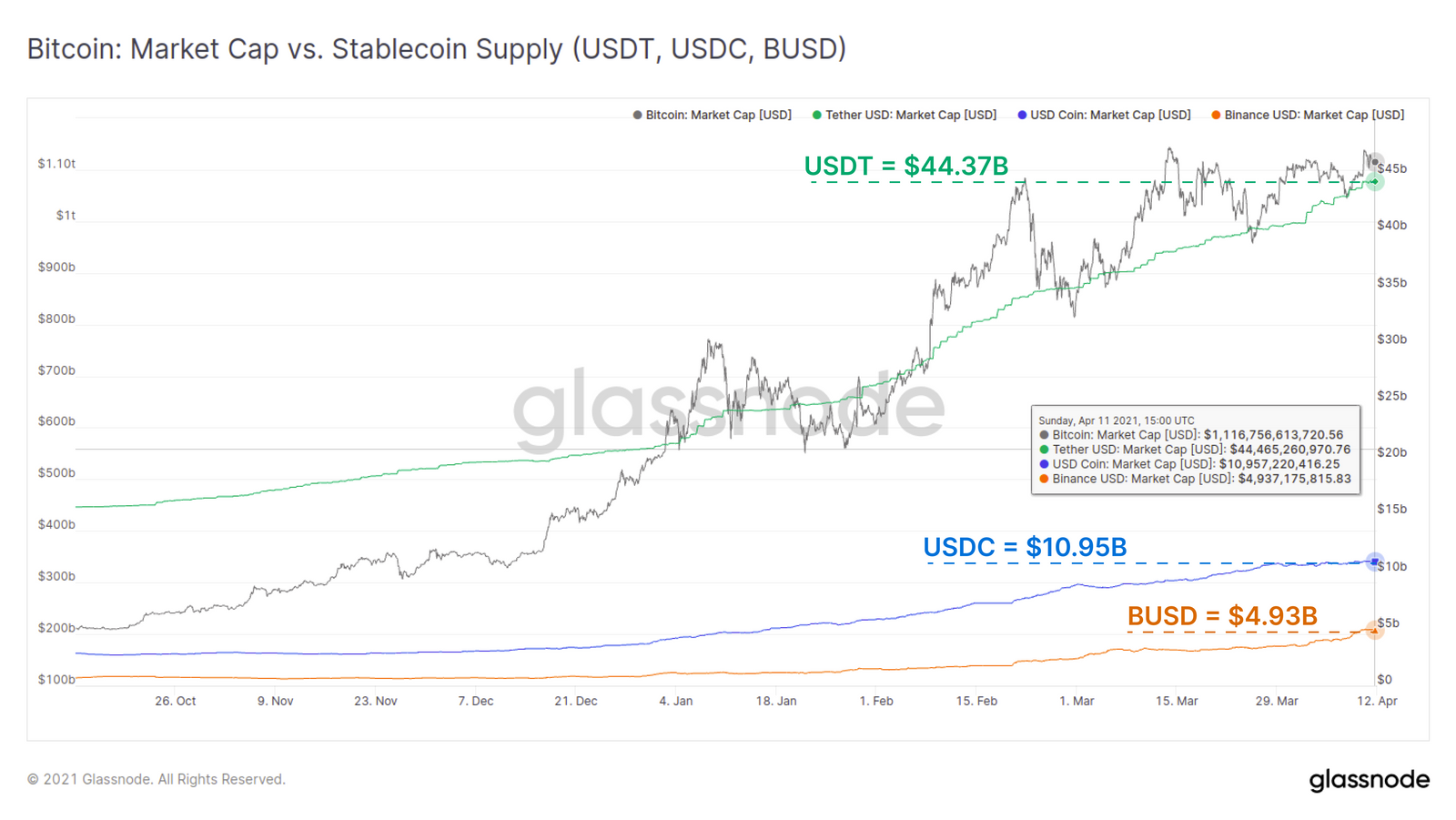Why are value inflows into Tether’s market important?

2021 has been a tremendously important year for the cryptocurrency market. The bullish momentum that kicked in towards the end of the previous year continues to sustain the market and drive prices of its top coins like Bitcoin and Ethereum. At the time of writing, both top cryptos were on their way to securing new ATHs. However, the overall bullish market has also had a positive impact on coins that don’t really see much price movement – Stablecoins.
According to data provided by Glassnode, stablecoin supply has seen tremendous growth in 2021 and continues to do so. Interestingly, this has also resulted in two key structural changes relative to previous market cycles. The report highlighted that the changes include drastic growth “in the availability of derivatives for speculation and hedging of risk” in the overall crypto-market, along with an increase in the usage of stablecoins as “both a reference trading currency and as DeFi collateral.”
Right now, coins such as USDT, USDC, and BUSD account for over 92 percent of the total stablecoin market, and taking a look at these coins illustrates the substantial growth they have enjoyed over the past few months and over the past 6 months. What is also interesting about this growth is the fact that it has happened, as expected, in sync with Bitcoin’s growth over the same timeframe.
As per the data highlighted by Glassnode, the supply growth of these top stablecoins, alongside Bitcoin’s market cap, highlights a correlated growth that has been driven by solid demand for both assets. Even when Bitcoin has traded sideways, at the start of April, for instance, USDT supply rose by $3.36 billion.
Given the current demand for assets like Bitcoin, this growth is likely to continue. Glassnode pointed out that as more value and buyers enter the stablecoin market, it fuels more native ‘digital dollars’ that are readily transferable throughout the cryptocurrency market. This has a bullish effect as it increases the market liquidity. In such a scenario, there will also be greater opportunity for centralized exchanges and DeFi products.
Taking a look a the Stablecoin Supply Ratio (SSR) which shows the ratio of Bitcoin’s market cap to the total stablecoin supply is a good indicator of the ‘buying power’ of stablecoins in the market. The report noted,
“If the price of Bitcoin is low, that [stablecoin] supply is able to buy a larger portion of the circulating BTC supply and therefore, push the price up — buying power is high [and SSR is Low]. As the price of BTC goes up, that supply of stablecoins is able to purchase less and less of the BTC on the market which reduces its ability to move the price upwards — buying power is low [and SSR is High].”
Interestingly, despite the growing price, the SSR ratio continues to be low and stablecoin supplies throughout 2020-21 have held the SSR metric near historical lows. This implies that digitally native dollars still have relatively high buying power in the market. In addition to this, the demand for stablecoins has noted a similar demand to that of Bitcoin in the present market as the 2020-21 bull run continues to unfold.








